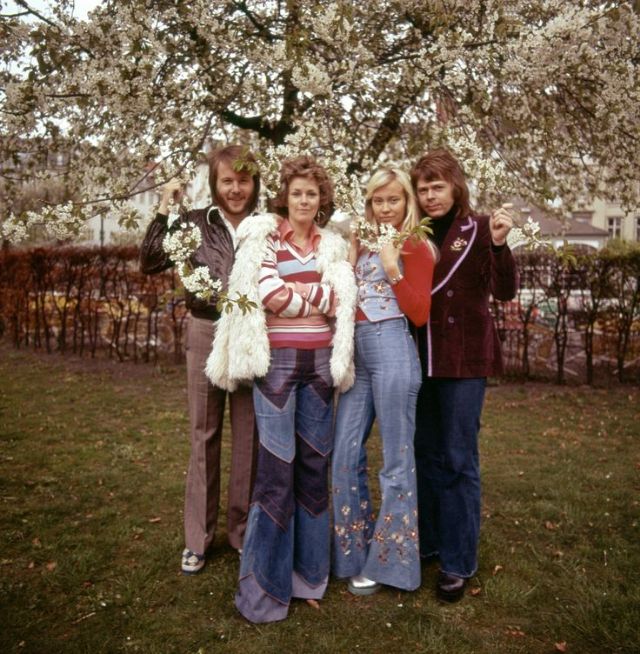The world of fashion has seen countless trends come and go, but few have left as indelible a mark as the Abba clothes style. Synonymous with glitz, glamour, and a touch of drama, this iconic look captured the spirit of the 1970s and continues to inspire designers and fans alike to this day. From their dazzling stage outfits to their everyday wardrobe choices, Abba’s unique style was a bold declaration of individuality and creativity, making them not just musical icons but also fashion trailblazers.
Abba, the Swedish pop group that took the world by storm in the 1970s, was known not just for their catchy tunes but also for their flamboyant and theatrical costumes. Their clothes were a visual feast of sequins, bold colors, and innovative designs that perfectly complemented their music. The Abba clothes style was more than just a collection of outfits; it was a storytelling medium that added depth to their performances and created an unforgettable brand identity. Whether it was their shimmering jumpsuits or their futuristic boots, every detail was meticulously crafted to leave a lasting impression.
Over the decades, the Abba clothes style has transcended its era, becoming a symbol of nostalgia and a source of inspiration for modern fashion. Today, it’s celebrated not just by fans of the iconic group but also by designers and stylists who see it as a treasure trove of ideas. In this article, we’ll delve into the origins of the Abba clothes style, explore its key elements, and examine its influence on contemporary fashion. Get ready to take a walk through a world of sparkle, creativity, and timeless elegance!
Table of Contents
- Biography of Abba
- The Origins of Abba Clothes Style
- Key Elements of Abba Fashion
- Iconic Stage Costumes
- Everyday Wear vs. Stage Wear
- Influence of 1970s Fashion
- The Role of Costume Designers
- Abba Style in Modern Pop Culture
- DIY Tips to Recreate Abba Style
- How Abba Clothes Reflected Their Music
- The Impact on Gender-Fluid Fashion
- Abba Clothes Style in Movies and Musicals
- Fashion Brands Inspired by Abba
- Frequently Asked Questions about Abba Style
- Conclusion
Biography of Abba
Abba, one of the most iconic pop groups of all time, was formed in Stockholm, Sweden, in 1972. The group consisted of four members: Agnetha Fältskog, Björn Ulvaeus, Benny Andersson, and Anni-Frid Lyngstad. Their name, ABBA, is an acronym derived from the first letters of their names. Known for their infectious melodies, harmonious vocals, and groundbreaking stage performances, Abba became a global phenomenon after winning the Eurovision Song Contest in 1974 with their hit song "Waterloo."
Their music, which blends pop, disco, and rock elements, resonated with audiences worldwide, earning them numerous awards and accolades. However, their influence extended beyond music to fashion, where their bold and innovative style became a defining feature of their identity.
| Full Name | Role in Abba | Birth Date | Birthplace | Notable Contributions |
|---|---|---|---|---|
| Agnetha Fältskog | Vocalist | April 5, 1950 | Jönköping, Sweden | Lead vocals on iconic hits |
| Björn Ulvaeus | Guitarist, Songwriter | April 25, 1945 | Gothenburg, Sweden | Co-writer of Abba's songs |
| Benny Andersson | Keyboardist, Songwriter | December 16, 1946 | Stockholm, Sweden | Co-writer of Abba's songs |
| Anni-Frid Lyngstad | Vocalist | November 15, 1945 | Bjørkåsen, Norway | Distinctive vocal harmonies |
Abba’s journey from a Eurovision-winning band to global superstars is a testament to their immense talent and charisma. As much as their music contributed to their success, their unique fashion sense played an equally significant role in making them unforgettable icons. Let’s dive deeper into the origins of their clothes style and how it became a cultural phenomenon.
Article Recommendations
- Morgan Freemans Romantic Life Who Is Morgan Freemans Girlfriend In 2024
- Uncover The Fascinating World Of Henry Hudson Interesting Facts For Young Explorers
- Piano Digital Yamaha P45 A Comprehensive Guide

